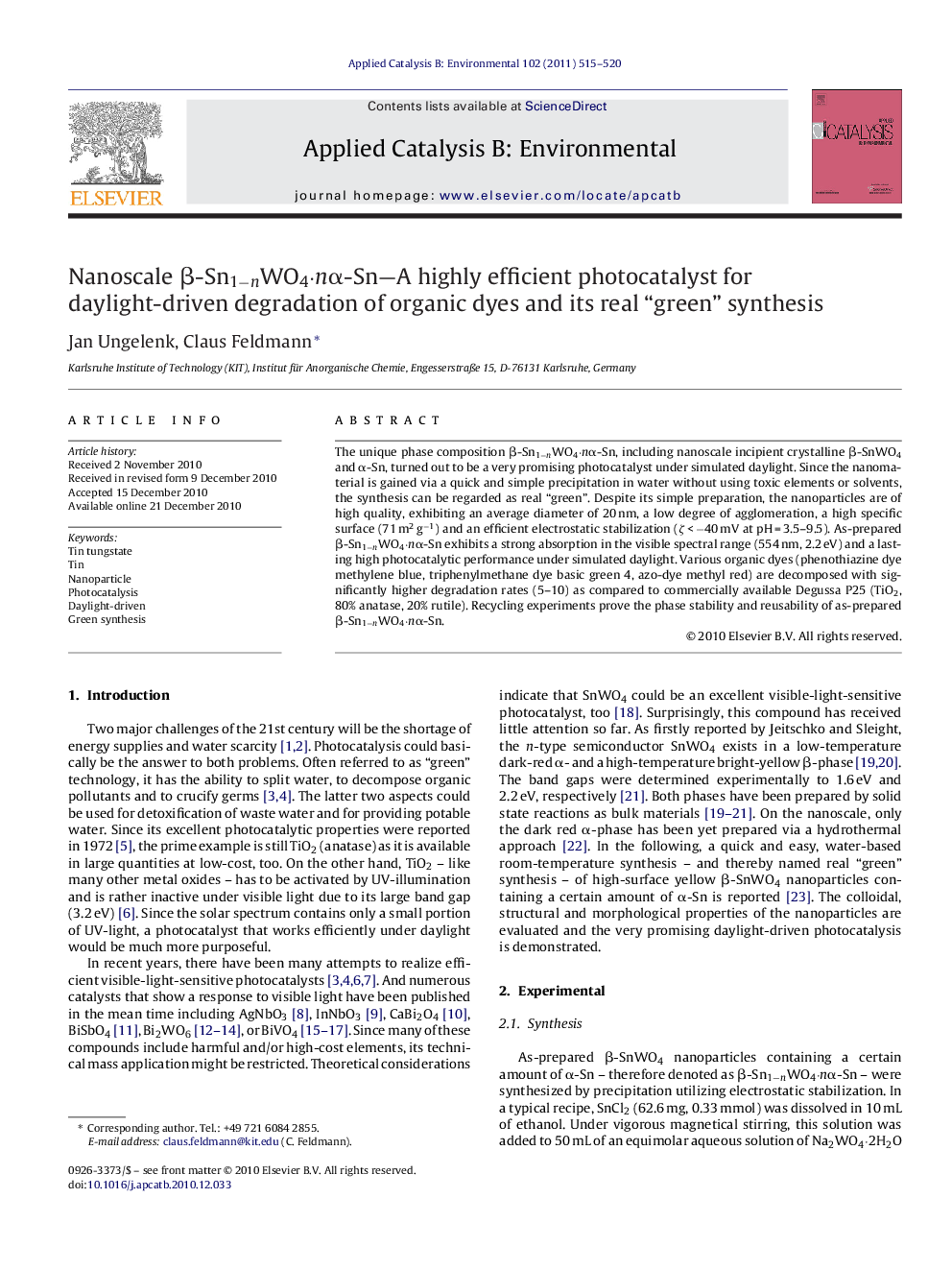| Article ID | Journal | Published Year | Pages | File Type |
|---|---|---|---|---|
| 47117 | Applied Catalysis B: Environmental | 2011 | 6 Pages |
The unique phase composition β-Sn1−nWO4·nα-Sn, including nanoscale incipient crystalline β-SnWO4 and α-Sn, turned out to be a very promising photocatalyst under simulated daylight. Since the nanomaterial is gained via a quick and simple precipitation in water without using toxic elements or solvents, the synthesis can be regarded as real “green”. Despite its simple preparation, the nanoparticles are of high quality, exhibiting an average diameter of 20 nm, a low degree of agglomeration, a high specific surface (71 m2 g−1) and an efficient electrostatic stabilization (ζ < −40 mV at pH = 3.5–9.5). As-prepared β-Sn1−nWO4·nα-Sn exhibits a strong absorption in the visible spectral range (554 nm, 2.2 eV) and a lasting high photocatalytic performance under simulated daylight. Various organic dyes (phenothiazine dye methylene blue, triphenylmethane dye basic green 4, azo-dye methyl red) are decomposed with significantly higher degradation rates (5–10) as compared to commercially available Degussa P25 (TiO2, 80% anatase, 20% rutile). Recycling experiments prove the phase stability and reusability of as-prepared β-Sn1−nWO4·nα-Sn.
Graphical abstractFigure optionsDownload full-size imageDownload as PowerPoint slideResearch highlights▶ Composite photocatalyst β-Sn1−nWO4·nα-Sn consisting of incipient crystalline β-SnWO4 and α-Sn. ▶ Simple water-based synthesis at ambient temperature. ▶ 20 nm sized nanoparticles with high specific surface and electrostatic stabilization. ▶ Photocatalytic activity under simulated daylight 5–10 times higher than TiO2. ▶ Recycling experiments prove reusability and stability.
